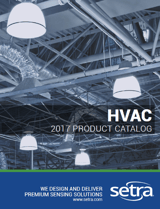Are You Compliant With USP 797 and USP 800 Standards?
Revised standards for USP General Chapter <797> for compounded sterile preparation (CSP) have been finalized and are active as of Nov 1, 2023. These revisions will also affect USP <800> where hazardous drug (HD) compounding is applicable. Both standards include environmental monitoring and management requirements that were not previously enforced and must be met to achieve accreditation through local and national governing bodies. Understanding the conditions and monitoring requirements is critical in ensuring compliance.
If you need help understanding the UPS <797> and USP <800> requirements and want to find compliant solutions, we would be happy to assist! Contact Setra today to talk with our product team and make sure that all of your spaces are compliant.
Environmental Conditions and Monitoring Requirements
Below we summarize the environmental monitoring and management requirements for all compounding spaces in both hazardous and non-hazardous environments as defined in USP <797> and USP <800>. Not all conditions require continuous monitoring though it is often considered best practice. The tables below provide indication for the monitoring requirements and minimum condition requirements for each environmental parameter.
Environmental Conditions and monitoring requirements for Non-Hazardous Compounding Spaces
| Space | Compound Category | ISO Req | Pressurization to Adjacent Space | DP (in WC) | Temp (°C) | RH (%) D | Min ACH Req C |
| Compounding Pharmacy (Buffer Room / SEC) | 1 | Unclassified SCA | N/A | N/A | < 20° | Max 60% | Not Specified |
| Compounding Pharmacy (Buffer Room / SEC) | 2 | ISO-Class 7 | Positive | 0.02 | < 20° | Max 60% | 30 |
| Anteroom | 2 | ISO-Class 8 | Positive | 0.02 | Not Specified | Not Specified | 20 |
Environmental Conditions and monitoring requirements for Hazardous Compounding Spaces
| Space | Compound Hazard Risk | ISO Req | Pressurization to Adjacent Space | DP (in WC) | Temp (°C) | RH (%) D | Min ACH Req C |
| Compounding Pharmacy (Buffer Room / SEC) | High | ISO-Class 7 | Negative | 0.01 - 0.03 | < 20° | Max 60% | 30 |
| Compounding Pharmacy (Buffer Room / SEC) | Low/ Medium | Unclassified C-SCA | Negative | 0.01 - 0.03 | < 20° | Max 60% | 12 |
| Anteroom | N/A | ISO-Class 7 | Negative | 0.01 - 0.03 | Not Specified | Not Specified | 20 |
Setra provides multiple products that comply with the environmental monitoring requirements of USP <797> and <800>. This includes room pressure monitors, differential pressure transducers and temperature and humidity sensors.
In addition to the environmental conditions and monitoring requirements summarized above, the following must be met to achieve compliance.
Particle Counting to meet ISO Cleanroom classifications
- To meet the specified ISO classifications in the previous table clean rooms must meet the particle count requirements defined by ISO-14644
- Total Particle count testing MUST be performed under dynamic operating conditions AT LEAST every 6 months to ensure compliance in Category 1 and 2 CSPs. For Category 3 CSPs, this MUST be done at least 30 days prior to compounding of the Category 3 CSP.
- Particle counting MUST be taken where there is the greatest risk to the exposed CSPs, containers, and closures
- ALL sampling sites must be described in SOPs
- If the readings exceed the values below, investigative and corrective action must be taken and documented
Explore Setra’s Solutions for Particle Counting
| ISO Class | Particle Counter Per Cubic Meter > 0.5 um |
| 3 | 35.2 |
| 4 | 352 |
| 5 | 3,520 |
| 6 | 35,200 |
| 7 | 352,000 |
| 8 | 3,520,000 |
*For a full table of ISO classification requirements, see ISO-14644
Additional Requirements:
- Differential pressure (DP), Temperature (T), and humidity (RH) devices must be verified to be in calibration per manufacturer recommendations or at least every 12 months
- DP,T, and RH must be recorded and readily retrievable
- Recommended: Interlocking and Hands-Free Doors
Best Practice
Meeting standards for USP <797> and USP <800> compliance is a great start to monitoring and managing environmental conditions in a compounding pharmacy, but the real goal is to create a safe, clean environment that eliminates contaminants and keeps patients and staff safe. In order to provide the best possible environment, there are a few best practices that should be implemented:
- Continuous monitoring of DP/T/RH with local display and alarming capabilities. Explore Setra’s Solutions: Environmental Monitors
- Conduct particle counting as often as possible, potentially continuously in areas with highest risk of contamination. Explore Setra’s Solutions: Particle Counters
- Maintain automated records of all environmental conditions in a compliant automated software. This can help with future root cause analysis, streamline audits and inspections and reduce the burden on the pharmacy staff on a daily basis. Explore Setra’s Solutions: CEMS
Whats Next?
Once familiar with the environmental conditions and monitoring requirements for compounding pharmacies it is time to get to work:
- Identify all compounding spaces in your facility
- Identify hazardous vs non-hazardous
- Identify sterile vs non-sterile
- Evaluate manual efforts required to monitor. These are great targets for workflow improvement and time savings for staff
- Define any future expandability requirements
- Upgrade non-compliant spaces
- Consider upgrades to HVAC & control system as well as installation of monitoring devices/sensors
- Upgrade compliant spaces that could benefit from more advanced monitoring
- Addition of local continuous monitoring
- Educate staff on the use of new monitoring solutions
Setra is committed to assisting our customers in meeting the new requirements for compounding pharmacies. Our team is ready to provide guidance on our products and solutions to make the transition as seamless as possible.



